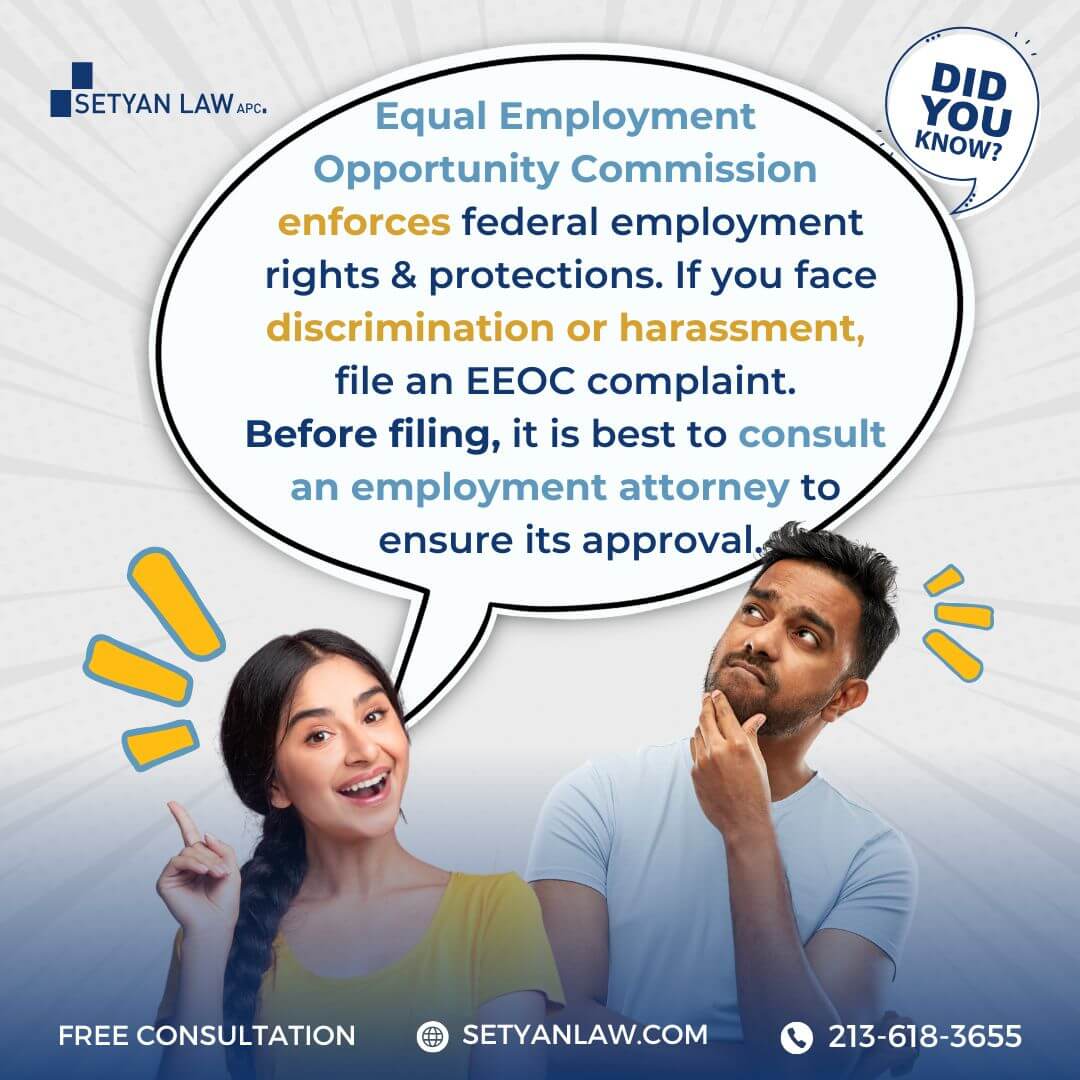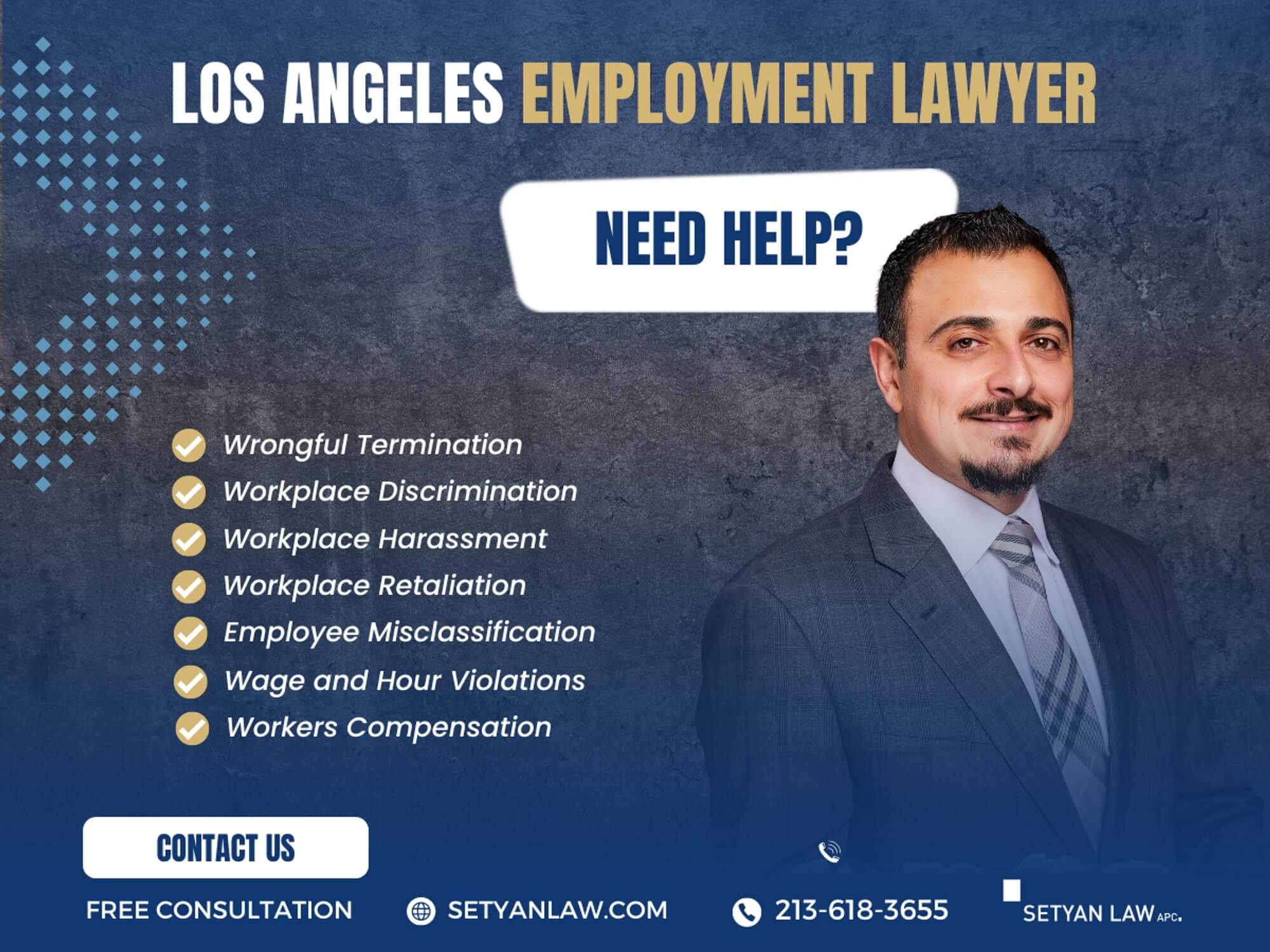Updated September 11, 2025
Navigating California EEOC settlement demands: A Comprehensive Guide for Employees
Workplace discrimination remains a pervasive issue, affecting countless employees across various industries. When faced with unfair treatment based on protected characteristics, many turn to the Equal Employment Opportunity Commission (EEOC) for recourse. Understanding California EEOC settlement demands is crucial for those seeking justice and fair compensation. This guide delves into the intricacies of EEOC settlements, providing valuable insights for employees navigating this complex process.
Workplace discrimination can take many forms, from unfair hiring practices to hostile work environments. The EEOC serves as a vital resource for employees facing such issues, offering a pathway to resolution through mediation, settlement, or litigation. As an employee considering or pursuing an EEOC claim, it’s essential to understand the types of demands that can be made and what to expect throughout the settlement process.
zWorking from California? Call Setyan Law at (213)-618-3655 to schedule a free consultation.
Understanding California EEOC settlement demands
California EEOC settlement demands encompass a range of remedies aimed at addressing workplace discrimination and its impacts. These demands typically fall into several categories, each designed to compensate the affected employee and prevent future occurrences of discriminatory behavior.
Monetary Compensation
Financial restitution often forms a significant part of California EEOC settlement demands. This can include:
- Back pay: Wages and benefits lost due to discriminatory actions
- Front pay: Future earnings that may be affected by the discrimination
- Compensatory damages: Compensation for emotional distress and other non-economic harms
- Punitive damages: Additional monetary penalties for particularly egregious cases of discrimination
The amount of monetary compensation varies widely depending on the specifics of each case, including the severity of the discrimination, its duration, and the employee’s financial losses.
Policy Changes and Training
Beyond financial compensation, EEOC settlements often demand systemic changes within the offending organization. These may include:
- Implementing new anti-discrimination policies
- Conducting mandatory diversity and inclusion training for all employees
- Establishing clear reporting procedures for discrimination complaints
- Creating oversight mechanisms to ensure compliance with anti-discrimination laws
Such demands aim to address the root causes of discrimination and foster a more inclusive workplace culture.
Job Reinstatement or Promotion
In cases where an employee was wrongfully terminated or denied advancement opportunities, EEOC settlements may demand:
- Reinstatement to the previous position
- Promotion to a position the employee was unfairly denied
- Adjustment of job responsibilities to remove discriminatory elements
These demands seek to restore the employee’s career trajectory and address the direct professional impacts of discrimination.
Factors Influencing California EEOC settlement demands
Several key factors can influence the nature and extent of California EEOC settlement demands:
Strength of evidence: Cases with clear, documented evidence of discrimination typically result in stronger settlement demands.
Severity of discrimination: More severe or prolonged instances of discrimination often lead to higher monetary demands and more extensive policy changes.
Company size and resources: The financial capacity of the employer may impact the monetary aspects of settlement demands.
Employee’s position and salary: Higher-ranking employees or those with larger salaries may see higher monetary demands to account for greater financial losses.
Willingness to litigate: If an employee is prepared to take the case to court, this can strengthen their negotiating position in settlement talks.
Understanding these factors can help employees and their legal representatives formulate realistic expectations and effective strategies for EEOC settlements.
The EEOC Settlement Process
Navigating the EEOC settlement process requires patience and strategic thinking. Here’s an overview of the typical steps involved:
Filing a charge: The process begins when an employee files a discrimination charge with the EEOC.
EEOC investigation: The commission investigates the claim, gathering evidence from both parties.
Mediation: Many cases enter mediation, where a neutral third party facilitates settlement discussions.
Conciliation: If mediation fails, the EEOC may attempt conciliation, proposing settlement terms to both parties.
Litigation: If settlement efforts fail, the EEOC may choose to file a lawsuit on behalf of the employee.
Throughout this process, settlement demands may be adjusted based on new evidence, changing circumstances, or shifts in negotiating positions.
California Workers: Call Setyan Law at (213)-618-3655 to schedule a free consultation.
Crafting Effective California EEOC settlement demands
For employees and their legal representatives, crafting effective California EEOC settlement demands requires a strategic approach:
Document everything: Maintain detailed records of all discriminatory incidents, communications, and their impacts.
Quantify damages: Work with financial experts to accurately calculate economic losses and project future impacts.
Consider non-monetary remedies: Think beyond financial compensation to address systemic issues within the workplace.
Be realistic but firm: Base demands on concrete evidence and legal precedents, while maintaining a strong negotiating position.
Prepare for alternatives: Have a clear understanding of your bottom line and be prepared to pursue litigation if necessary.
By approaching settlement demands thoughtfully and strategically, employees can increase their chances of achieving a favorable resolution.
Notable EEOC Settlement Examples
Examining past EEOC settlements can provide valuable insights into the types of demands that have been successful. Here are a few notable examples:
EEOC v. MVM, Inc.
$1.6 million settlement for employees who experienced discrimination based on national origin.
EEOC v. Del Taco, LLC
$1.25 million settlement for female employees who experienced sexual harassment and retaliation.
EEOC v. Air Systems, Inc.
$1.25 million settlement for Black employees who experienced racial discrimination.
EEOC v. Porous Materials
$93,000 settlement for employees who experienced harassment based on race, sex, and national origin.
Race Discrimination: AA Foundries Case
In this case, the EEOC secured a $200,000 settlement for three former employees who faced racial harassment. The settlement included monetary damages and required the company to implement new anti-discrimination policies and training programs.
Disability Discrimination: Benny Boyd Car Dealership Case
This settlement involved a $250,000 payment to a former manager who was denied partnership and subjected to a hostile work environment due to his multiple sclerosis diagnosis. The settlement also mandated changes in the company’s disability accommodation practices.
Sex-Based Harassment: U.S. Postal Service Case
Multiple complainants received between $45,000 and $75,000 each in non-pecuniary compensatory damages for enduring years of sex-based harassment. The settlement also required extensive changes to the agency’s harassment prevention and reporting procedures.
These examples illustrate the diverse nature of EEOC settlements and the potential for significant monetary and non-monetary remedies.
Challenges in EEOC Settlements
While EEOC settlements can provide valuable recourse for victims of workplace discrimination, the process is not without challenges:
Proving discrimination: Gathering sufficient evidence to support claims of discrimination can be difficult, especially in subtle cases.
Employer resistance: Some employers may vigorously contest claims or drag out negotiations, prolonging the settlement process.
Emotional toll: Pursuing an EEOC claim can be emotionally taxing for employees, requiring resilience and support.
Confidentiality concerns: Some settlements may include confidentiality clauses, limiting an employee’s ability to discuss the case.
Career impacts: Engaging in an EEOC claim may have long-term career implications, potentially affecting future job prospects.
Understanding these challenges can help employees better prepare for the settlement process and make informed decisions about pursuing a claim.
The Role of Legal Representation in EEOC Settlements
Securing competent legal representation is crucial when navigating EEOC settlements. An experienced employment law attorney can:
- Evaluate the strength of your case
- Help gather and organize evidence
- Craft effective settlement demands
- Negotiate with employers and their legal teams
- Provide guidance on whether to accept a settlement or pursue litigation
While it’s possible to pursue an EEOC claim without legal representation, having an attorney significantly increases the likelihood of a favorable outcome.
Long-Term Impacts of EEOC Settlements
EEOC settlements can have far-reaching effects beyond the immediate resolution of a discrimination claim:
Workplace culture changes: Successful settlements often lead to improved policies and practices, benefiting all employees.
Industry-wide impacts: High-profile settlements can influence practices across entire industries, promoting broader change.
Legal precedents: Some settlements contribute to the evolution of employment law, shaping future cases and interpretations.
Personal and professional growth: For many employees, the process of standing up against discrimination can be empowering and transformative.
Understanding these potential long-term impacts can help employees see their EEOC claims as part of a larger movement toward workplace equality.
Preparing for Life After an EEOC Settlement
Reaching a settlement is not the end of the journey for many employees. Here are some considerations for life after an EEOC settlement:
Career planning: Consider how the settlement might affect your current job or future career prospects.
Financial planning: Seek professional advice on managing any monetary compensation received.
Emotional healing: Consider counseling or support groups to process the emotional impacts of discrimination and the settlement process.
Continued vigilance: Stay informed about your rights and be prepared to address any future instances of discrimination.
Advocacy: Consider using your experience to advocate for workplace equality and support others facing similar challenges.
By thoughtfully preparing for post-settlement life, employees can maximize the positive impacts of their EEOC claims and contribute to broader workplace equality efforts.
California residents: It’s always best to consult a qualified Employment Attorney regarding your EEOC complaint before you file. Employment law has many pitfalls and an attorney can help you navigate past them safely. Sam Setyan will review your grievance, tell you your options, and guide you to the most favorable outcome possible. It’s your call.
Call 213-618-3655 for a free consultation.
Conclusion: Navigating the Path Forward
Remember, every EEOC case is unique, and the specific demands and outcomes will vary based on individual circumstances. However, by arming yourself with knowledge, seeking appropriate legal representation, and maintaining a clear vision of your goals, you can effectively navigate the EEOC settlement process and work towards a resolution that addresses the harm you’ve experienced and contributes to a more equitable workplace for all.
As you consider whether to file a California EEOC complaint, remember these key points:
Timing is crucial. Be aware of the deadlines for filing a complaint and act promptly if you believe you’ve experienced discrimination.
Documentation is vital. Gather and organize all relevant evidence to support your case.
Know your rights. Familiarize yourself with your rights throughout the EEOC process and don’t hesitate to assert them.
Consider legal representation. An experienced employment law attorney can provide invaluable guidance and advocacy throughout the process.
Be prepared for a potentially lengthy process. EEOC complaints can take time to resolve, so patience and persistence are important.
Understand all your options. From mediation to litigation, be aware of the different paths your case could take.
Protect yourself from retaliation. Know that it’s illegal for your employer to retaliate against you for filing a California EEOC complaint.
Take care of your well-being. The process can be stressful, so make sure to prioritize your mental and emotional health.
The decision to file a California EEOC complaint is a personal one that depends on your individual circumstances. It’s not a step to be taken lightly, but it can be a powerful way to address discrimination and protect your rights in the workplace.
If you’re unsure about how to proceed, consider seeking a consultation with an employment law attorney. We can provide personalized advice based on the specifics of your situation and help you make an informed decision about the best path forward.
California Workers Only: Call Setyan Law at (213)-618-3655 to schedule a free consultation.









